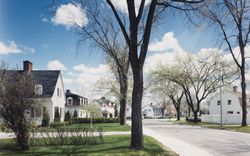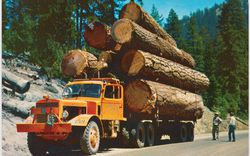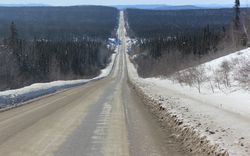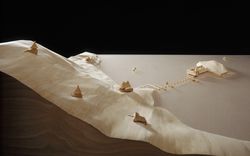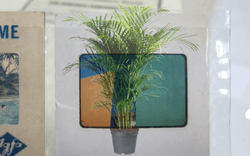But the Hudson is not just plagued by the poisonous legacy of the American industrial age. In addition, the river and the communities of humans and animals that live on its verges are increasingly threatened by the toxic infrastructure of our current age of extreme extraction. Beginning in late 2011, freight trains passing down the west bank of the Hudson River began carrying a highly volatile form of crude oil extracted by hydraulic fracturing (aka fracking) from the Bakken shale of North Dakota to East Coast refineries. The trains that transport this hazardous cargo in hundreds of black, pill-shaped container cars, each holding thirty thousand gallons (the equivalent of 2 million sticks of dynamite) of highly flammable and toxic fuel, are called “bomb trains” by railroad workers. Several of these ominous-looking trains snake south every day from the port of Albany, where they pass within fifteen feet (less than five metres) of a public housing complex, to the large refinery in Philadelphia. The bomb trains have earned their nickname: in 2013, one such train derailed and exploded in Lac Mégantic, Québec, killing forty-seven people and dumping hundreds of thousands of gallons of crude oil into the local river. As the amount of volatile crude shipped by rail has skyrocketed, from only nine thousand black rail cars in 2009 to over five hundred thousand today, so have the number of explosions. Despite this massive increase in rail traffic, “bomb trains” are not the only means by which crude oil is transported along the Hudson. As a result of the current glut of fossil fuels, crude is being shipped down the Hudson River not just by trains but also by barges, which carried three billion gallons of oil down the river from Albany in 2015. The US Coast Guard is currently considering creating forty three new anchorage sites for container ships along the Hudson, essentially turning 2,400 acres of the river into parking lots for these bomb barges.
Adding significantly to this toxic infrastructure, fossil fuel corporations are also pushing forward with the construction of pipelines designed to transport fracked petroleum and tar sands oil down the Hudson, including the Pilgrim Pipeline, slated to stretch 170 miles (275 kilometres) down the west side of the Hudson river. The Pilgrim Pipeline will cut through over fifty towns in New York and New Jersey, as well as numerous wetlands and tributaries of the Hudson, with its freight of dangerous fracked oil, threatening local water supplies and spreading air pollution even barring a catastrophic rupture. Multiplying this risk massively, the Algonquin Incremental Market pipeline was drilled by the Spectra Energy Corporation underneath the Hudson River, within hundreds of feet (a few hundred metres) of the aging Indian Point nuclear power plant in Buchanan, New York—located just thirty miles (less than fifty kilometres) north of Times Square, having itself a history of leaks, small fires, and spills that dates back to its opening in 1962. Since Spectra Energy could not get clearance to drill underneath the nuclear power plant, it linked the wide pipeline it bored underneath the Hudson to an old, smaller-diameter pipeline laid before Indian Point was built. Given that one of the biggest contributors to deadly pipeline explosions in the United States is the aging of the nation’s fossil fuel infrastructure, Spectra’s plans to ship volatile crude through a sixty-year old pipeline beneath a nuclear reactor built just outside the nation’s largest city is nothing short of criminal.
If we are to avoid catastrophic climate change, we cannot build any more pipelines or dig any more coal mines. As Bill McKibben recently put it: “We’re done expanding the fossil fuel frontier.” The struggle against the deadly expansionist logic of fossil capitalism is now playing out with great visibility at Standing Rock in North Dakota. Yet Standing Rock is not the only site of struggle against fossil capitalism. The hazardous infrastructure of extreme extraction is coming to a town, river, or waterfront near you, if it’s not already hiding there. The United States and Canada have nearly 5 million kilometres (more than 3 million miles) of pipeline and are adding new infrastructure at a frenetic rate. This expanding skein of oil and gas industry infrastructure causes hundreds of accidents every year, and also contributes to the slow violence of climate change through systemic leaks of greenhouse gases such as methane. While pipeline accidents are relatively infrequent in statistical terms—trucking accidents, for example, kill four times as many people each year on average as pipeline ruptures—when pipelines do burst, they cause catastrophic damage. In addition, pipelines like those beneath the Indian Point nuclear power plant stay underground, their condition unmonitored for decades, until a cataclysm occurs. Yet aging pipelines are not the only problem: recently installed pipelines have a failure rate equivalent to that of century-old ones, reflecting a contemporary rush to install infrastructure in order to cope with the surplus of oil and gas produced by the fracking revolution. This surplus is so great that much of the hidden fossil capitalist infrastructure is not being installed to foster “energy independence,” but rather to facilitate export of gas and oil to more lucrative markets abroad. In the process, some of the most iconic sites in the United States are being threatened. This is certainly true along the Hudson River. If the Hudson River Valley was once a symbol of the New World’s promise, of the great natural abundance that defined America as a nation, it has registered many of the tribulations of the Anthropocene Age. Still polluted by the toxic legacy of the industrial age that propelled the United States to global hegemony, the Hudson is now on the frontlines of a fight against forms of extreme extraction that constitute nothing short of an existential threat to humanity’s future on the planet.


